Introduction
In the realm of culinary delights, the humble combination of rapeseed greens (also known as bok choy or Chinese cabbage in some regions) and shiitake mushrooms often gets overshadowed by more exotic ingredients. However, this pairing holds a wealth of flavors and nutritional benefits that, when cooked correctly, can elevate any meal to a gourmet experience. Stir-frying is a technique that perfectly captures the essence of these ingredients, preserving their freshness and enhancing their natural flavors. This article aims to guide you through the art of stir-frying rapeseed greens and shiitake mushrooms, ensuring your dish is not only delicious but also nutritious and visually appealing.
Understanding Your Ingredients
Rapeseed Greens (Bok Choy):
Rapeseed greens, with their crisp stalks and tender leaves, are a staple in Asian cuisine. They are rich in vitamins A, C, and K, along with essential minerals like potassium and calcium. Their mild, slightly sweet flavor makes them an excellent canvas for a variety of seasonings and cooking techniques. When selecting rapeseed greens, look for firm stalks and vibrant green leaves without signs of wilting or discoloration.
Shiitake Mushrooms:
Shiitake mushrooms are renowned for their earthy, umami-rich taste. They are a treasure trove of antioxidants, vitamins, and minerals, particularly vitamin D and selenium. Their meaty texture and deep flavor make them a favorite among chefs and home cooks alike. When buying shiitake mushrooms, opt for those with firm caps and dry, clean stems. Avoid mushrooms with slimy surfaces or soft spots, as these are signs of spoilage.
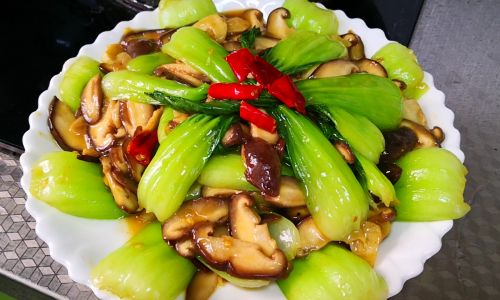
Preparation Before Stir-Frying
-
Cleaning and Chopping:
- Begin by rinsing the rapeseed greens thoroughly under cold running water. Separate the stalks from the leaves, as they cook at different rates. Pat them dry using paper towels to remove excess water, which could cause steaming rather than stir-frying.
- For the shiitake mushrooms, gently wipe them clean with a damp cloth or soft brush. Avoid soaking them in water, as this can dilute their flavor. Remove the stems and slice the caps into thin pieces for even cooking.
-
Seasoning and Aromatics:
- Gather your seasoning ingredients: soy sauce, oyster sauce (optional for added umami), garlic, ginger, and a pinch of salt and pepper. Fresh herbs like scallions or cilantro can be added at the end for a burst of freshness.
- Mince the garlic and ginger finely. These aromatics are crucial in creating the foundation of flavor for your stir-fry.
The Stir-Frying Technique
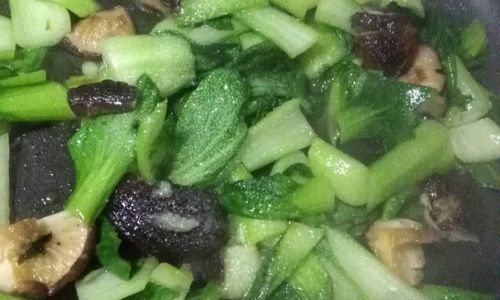
-
Heating the Pan and Oil:
Use a wok or a large, heavy-bottomed skillet for optimal heat retention. Preheat the pan over medium-high heat until it’s very hot. Add a tablespoon or two of oil—vegetable, peanut, or sesame oil are all good choices. The oil should shimmer but not smoke.
-
Aromatics and Mushrooms:
- Add the minced garlic and ginger to the hot oil. Stir-fry for about 30 seconds until fragrant but not burnt. This step is known as “toasting” the aromatics and is crucial for developing the base flavor of your dish.
- Immediately add the sliced shiitake mushrooms to the pan, spreading them out in a single layer. Allow them to sear undisturbed for a minute or so, until they start to brown and release their juices. This caramelization adds depth to the dish.
-
Stalks and Leaves:
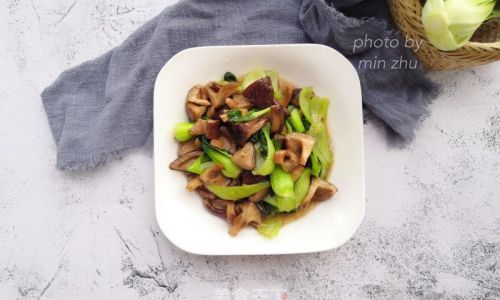
- Once the mushrooms have browned nicely, push them to the side of the pan and add the rapeseed stalks. Stir-fry the stalks for about 2 minutes, allowing them to soften slightly. They will take longer to cook than the leaves.
- Now add the leaves, tossing everything together gently but quickly. The high heat and quick stirring ensure that the greens retain their bright color and crisp texture.
-
Seasoning and Final Touches:
- Drizzle in soy sauce and a teaspoon of oyster sauce (if using), stirring well to coat all the ingredients evenly. Add a pinch of salt and pepper to taste. Be cautious with the soy sauce, as it can quickly make the dish too salty.
- Taste and adjust the seasoning as needed. If you prefer a bit of sweetness, a teaspoon of honey or a pinch of sugar can balance the flavors nicely.
-
Garnishing and Serving:
- Remove the stir-fry from heat just before the greens reach your desired level of doneness—they should still have a bit of crunch. Overcooking will turn them into a mushy mess.
- Garnish with chopped scallions or cilantro for a fresh, vibrant finish. Serve immediately while hot, accompanied by a side of steamed rice or noodles to soak up the delicious sauce.
Tips for Perfect Stir-Frying
- Hot Pan, Cold Oil: Always ensure your pan is very hot before adding oil. This prevents the oil from smoking and keeps your food from sticking.
- Don’t Crowd the Pan: Overfilling the pan will lower the temperature and steam the ingredients rather than stir-fry them. Work in batches if necessary.
- Quick Stirring: Constant, rapid stirring ensures even cooking and prevents burning.
- Use High-Quality Ingredients: Fresh, high-quality ingredients make all the difference in a stir-fry.
- Season to Taste: Taste your dish frequently as you cook, adjusting seasoning as needed.
Conclusion
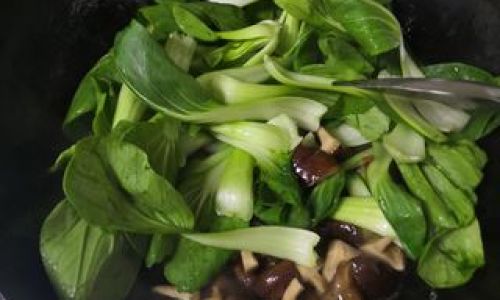
Stir-frying rapeseed greens and shiitake mushrooms is a simple yet rewarding culinary endeavor. By mastering the technique and paying attention to detail, you can transform these humble ingredients into a dish that is both a feast for the senses and a nourishing addition to your diet. Remember, the key to a successful stir-fry lies in the balance of flavors, the right cooking temperature, and swift, efficient stirring. With practice, you’ll soon be creating restaurant-quality dishes in your own kitchen, delighting family and friends with every bite. Happy stir-frying!

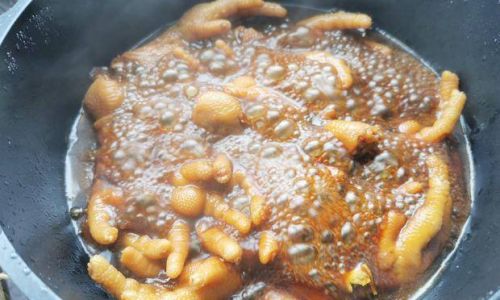
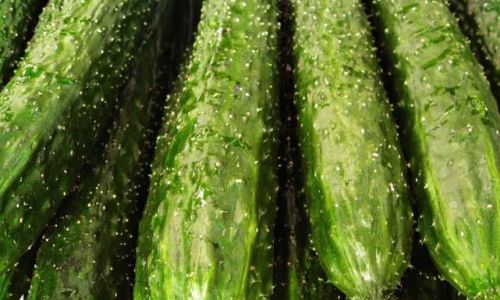


0 comments